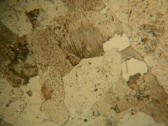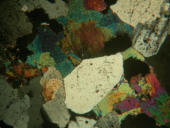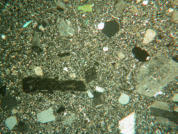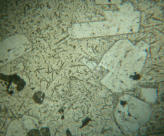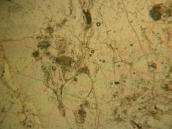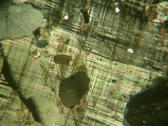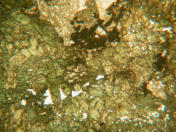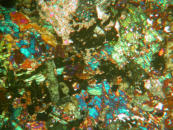



© University of Liverpool, Department of Earth, Ocean & Ecological Sciences 2013
G E O - O E R




Click on an image to enlarge it and see a brief explanation
The eight images below show examples of mafic igneous rocks. The essential minerals in these rocks are plagiolase feldspar and
pyroxene. (Olivine is another ferromagnesian mineral which may be found in these rocks)
In these thin sections you should be able to identify fine, medium and coarse crystal sizes, equigranular textures and porphyritic
textures.
The four images below show examples of intermediantermediate igneous rocks. Essential minerals in these rocks are plagioclase feldspar and
alkali feldspar. (Other minerals which may be in these rocks are biotite, pyroxene and amphibole)
The first four images show coarsely crystalline rocks and you should be able to identify the feldspars and the different ferromagnesian
minerals.
The next four images show another intermediate igneous rock named trachye. For these thin sections check that you can identify
porphyritic texture, phenocrysts and flow alignment of feldspar phencrysts.
The following images show examples of 3 silicic igneous rocks (granite, microgranite and pitchstone). Essential minerals in these rocks
are plagioclase feldspar, alkali feldspar and quartz. (Other minerals which may be in these rocks are biotite, muscovite and amphibole)
For each of these thin sections try to identify the crystal sizes, minerals and rock textures shown.
The essential minerals in the ultramafic igneous rocks are pyroxene and/or olivine. The images below show the ultrama ultramafic rock named
picrite.

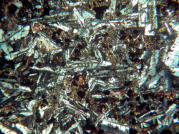
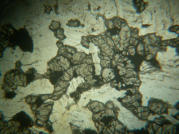
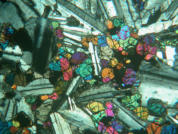
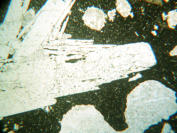
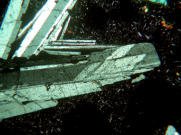
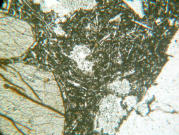


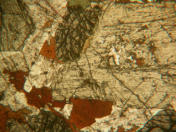
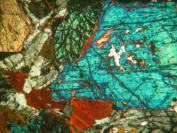

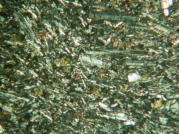
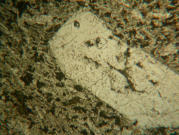
 <25);"/>
<
<25);"/>
<
